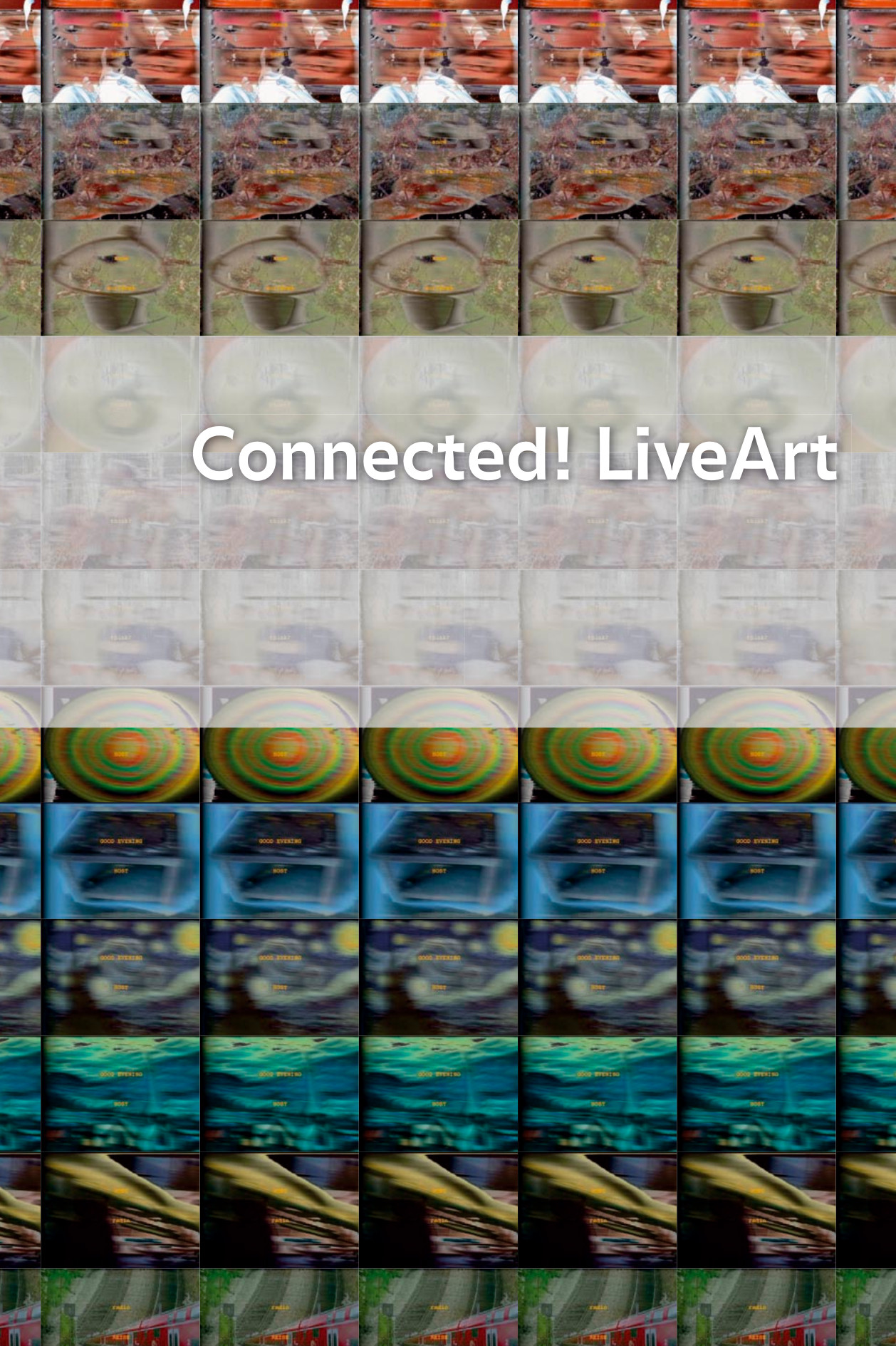Sher Doruff: The Translocal Event and the Polyrhythmic Diagram (2006)
Filed under thesis | Tags: · aesthetics, art, collaboration, composition, digital art, emergence, media art, network art, performance, software, translocal performance
This thesis identifies and analyses the key creative protocols in translocal performance practice, and ends with suggestions for new forms of transversal live and mediated performance practice, informed by theory. It argues that ontologies of emergence in dynamic systems nourish contemporary practice in the digital arts. Feedback in self-organised, recursive systems and organisms elicit change, and change transforms. The arguments trace concepts from chaos and complexity theory to virtual multiplicity, relationality, intuition and individuation (in the work of Bergson, Deleuze, Guattari, Simondon, Massumi, and other process theorists). It then examines the intersection of methodologies in philosophy, science and art and the radical contingencies implicit in the technicity of real-time, collaborative composition. Simultaneous forces or tendencies such as perception/memory, content/expression and instinct/intellect produce composites (experience, meaning, and intuition- respectively) that affect the sensation of interplay. The translocal event is itself a diagram – an interstice between the forces of the local and the global, between the tendencies of the individual and the collective. The translocal is a point of reference for exploring the distribution of affect, parameters of control and emergent aesthetics. Translocal interplay, enabled by digital technologies and network protocols, is ontogenetic and autopoietic; diagrammatic and synaesthetic; intuitive and transductive. KeyWorx is a software application developed for real-time, distributed, multimodal media processing. As a technological tool created by artists, KeyWorx supports this intuitive type of creative experience: a real-time, translocal “jamming” that transduces the lived experience of a “biogram,” a synaesthetic hinge-dimension. The emerging aesthetics are processual – intuitive, diagrammatic and transversal.
Doctor of Philosophy, SMARTlab Programme in Performative New Media Arts, Central Saint Martins College of Art & Design, University of the Arts, London
288 pages
PDF
PDF (Appendix “The KeyWorx Interviews: Transcripts of Interviews and Conversations with KeyWorx Artists”)
Sher Doruff, Nancy Mauro-Flude (eds.): Connected: LiveArt (2005)
Filed under catalogue | Tags: · art, collaboration, installation art, media art, network art, networks, radio art, sound art, streaming, telepresence

“The Connected! Programme spanned a two year period from January 2003 to January 2005. It officially concluded with a celebratory Birthday party for Art in the Theatrum Anatomicum of Waag Society, the local ‘home’-base of many Connected! projects. Although most of the people present at that event agreed with Federico Bonelli’s assessment “that art could have committed suicide in 1984″ – the research and the show goes on.
The Connected! Programme had four nested components: Projects, Artists-in-Residence, Sentient Creatures Lecture Series and Anatomic. This book documents many of the activities in these domains; the lectures, the events, the workshops, the performances, the installations, the discourse. Yet, it’s interesting to note that pulling together material for this publication was a bit like trying to capture the wind. Much of the work produced in this two-year period emphasized the real-time process of the making. Documentation of that often fragile, unstable and always already ephemeral process is sketchy at best and marginal to the actualization of the event itself. For many of these artists, documentation is a secondary concern, an afterthought. For others, documenting is an integral process indistinguishable from the event itself.
There are myriad photos in this catalogue of artists behind their laptops. Myriad photos that say little about the levels and layers of codified communication emitted from those unseen screens. These casual, unpretentious shots are images of social networks in progress – the translocal – a feedback loop of the local effecting the global affecting the local affecting the global. Not only does the artwork produced, or better transduced, scramble representational meaning but so too does the process of making. Performance practice that addresses the indeterminate dance-on-the-edge-of-chaos in compositional processes is a felt thing, an experience that doesn’t always translate well in laptop snapshots.”
Co-writers: Federico Bonelli, Beth Coleman, Josephine Dorado, Lucas Evers, Wander Eikelboom, Howard Goldkrand, Jan-Kees van Kampen, Arjen Keesmaat, Jeff Mann, Mark Meadows, Hellen Sky, Michelle Teran, Ananya Vajpeyi
Publisher Waag Society, Amsterdam, September 2005
Creative Commons BY-SA 2.0 Netherlands License
160 pages
PDF (updated on 2012-9-3)
Comment (0)Bill Stewart: Living Internet (2000)
Filed under living book | Tags: · computing, email, history of communications, history of computing, history of technology, internet, irc, mailing list, mud, usenet, web

An in-depth reference about the Internet.
The site was written from 1996 through 1999, first published on the web on January 7, 2000, and updated regularly. It has more than 700 pages, 2,000 intra-site links, and 2,000 external links to some of the world’s best online content about the Internet.
The site is authored by Bill Stewart who has used the Internet since 1988, and first appreciated the power of the medium during the Tiananmen Square rebellion in China in 1989, when he saw how the net kept Chinese communities around the world in touch with the events through email and newsgroups, bypassing all government censorship.
View online (HTML)
Comment (0)
